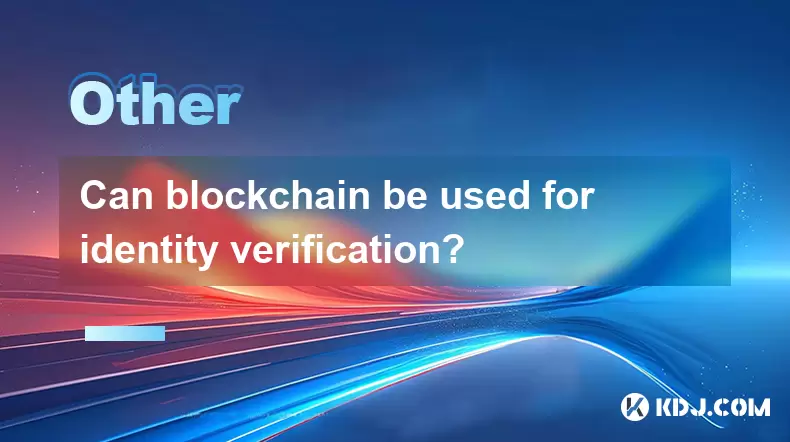-
 Bitcoin
Bitcoin $118400
0.39% -
 Ethereum
Ethereum $3814
2.17% -
 XRP
XRP $3.547
1.34% -
 Tether USDt
Tether USDt $1.000
0.00% -
 BNB
BNB $769.5
2.95% -
 Solana
Solana $191.7
6.36% -
 USDC
USDC $0.9999
0.01% -
 Dogecoin
Dogecoin $0.2722
7.75% -
 Cardano
Cardano $0.8995
5.59% -
 TRON
TRON $0.3158
-0.78% -
 Hyperliquid
Hyperliquid $47.37
4.46% -
 Stellar
Stellar $0.4848
3.54% -
 Sui
Sui $4.031
1.72% -
 Chainlink
Chainlink $20.11
3.94% -
 Hedera
Hedera $0.2832
3.16% -
 Avalanche
Avalanche $26.20
4.27% -
 Bitcoin Cash
Bitcoin Cash $530.5
0.67% -
 Shiba Inu
Shiba Inu $0.00001568
3.59% -
 Litecoin
Litecoin $118.4
1.42% -
 UNUS SED LEO
UNUS SED LEO $8.976
-0.23% -
 Toncoin
Toncoin $3.349
2.54% -
 Polkadot
Polkadot $4.590
2.54% -
 Uniswap
Uniswap $10.56
-0.59% -
 Ethena USDe
Ethena USDe $1.001
0.00% -
 Monero
Monero $327.7
0.39% -
 Pepe
Pepe $0.00001422
2.62% -
 Bitget Token
Bitget Token $4.973
-1.22% -
 Dai
Dai $1.000
0.02% -
 Aave
Aave $331.9
1.59% -
 Bittensor
Bittensor $429.6
-0.56%
What are the security features of blockchain?
Blockchain's security stems from decentralization, cryptographic hashing, and consensus mechanisms, making it resistant to tampering and fraud.
Jul 21, 2025 at 07:43 pm

Understanding Blockchain Security
Blockchain technology is widely recognized for its robust security features that distinguish it from traditional centralized systems. At its core, blockchain is designed to be immutable and decentralized, making it highly resistant to tampering and fraud. The foundation of its security lies in the combination of cryptographic techniques, consensus algorithms, and distributed architecture.
One of the primary security features of blockchain is its use of cryptographic hashing. Each block in the chain contains a unique hash of the previous block, creating a secure and unbreakable link. Any alteration in one block would require recalculating all subsequent blocks, which is computationally infeasible.
Decentralization and Its Role in Security
Unlike traditional databases that rely on a central authority, blockchain operates on a decentralized peer-to-peer network. This means that data is stored across multiple nodes, eliminating a single point of failure. If one node is compromised, the rest of the network remains unaffected.
Consensus mechanisms like Proof of Work (PoW) and Proof of Stake (PoS) are used to validate transactions across the network. These protocols ensure that all participants agree on the current state of the ledger without the need for a central intermediary. This decentralized validation process significantly reduces the risk of malicious attacks.
Another key aspect of decentralization is data redundancy. Since every node maintains a copy of the entire blockchain, it becomes extremely difficult for attackers to manipulate data without being detected. This redundancy also ensures high availability and fault tolerance.
Public Key Cryptography and Identity Protection
Public key cryptography is a cornerstone of blockchain security. Each user has a unique pair of keys — a public key and a private key. The public key is used to receive funds or data, while the private key is used to sign transactions and prove ownership.
Digital signatures ensure that transactions cannot be forged or altered after being submitted to the network. When a user initiates a transaction, they sign it with their private key. Other nodes verify this signature using the corresponding public key, ensuring authenticity and non-repudiation.
Private keys must be kept secure, as losing them means losing access to assets or data permanently. Unlike traditional systems, there is no password reset option in blockchain. Users are solely responsible for safeguarding their private keys, which is why secure storage solutions like hardware wallets are recommended.
Immutability Through Hashing and Timestamping
Blockchain ensures data immutability through cryptographic hashing and timestamping. Each block contains a hash of the previous block, creating a chain that is resistant to modification. If someone attempts to alter a transaction, the hash of that block changes, breaking the chain and alerting the network.
Timestamping also plays a crucial role in maintaining the integrity of the ledger. Every transaction is recorded with a timestamp, making it possible to trace the history of any data entry. This feature is especially important in legal and compliance contexts where audit trails are necessary.
Additionally, blockchain timestamps are often secured through cryptographic proofs and trusted third-party services, further enhancing their reliability. This makes blockchain a powerful tool for applications requiring long-term data integrity, such as supply chain management and digital identity verification.
Smart Contract Security and Code Auditing
Smart contracts are self-executing agreements with the terms directly written into code. While they offer automation and efficiency, they also introduce new security challenges. A single vulnerability in a smart contract can lead to significant financial losses.
To mitigate risks, developers conduct thorough code audits and use formal verification techniques. Formal verification involves mathematically proving the correctness of a smart contract, ensuring it behaves as intended under all conditions.
Security practices such as multi-signature wallets and time-locked transactions are also employed to enhance smart contract safety. These measures help prevent unauthorized access and provide recovery options in case of errors or attacks.
Network Security and Defense Against Attacks
Blockchain networks are designed to resist various types of cyberattacks. Common threats include 51% attacks, Sybil attacks, and DDoS attacks. Each of these is addressed through specific security protocols and network design choices.
In a 51% attack, an entity gains control of more than half of the network’s computing power, allowing them to manipulate transactions. PoW-based blockchains mitigate this risk by requiring immense computational resources, making such attacks economically impractical.
Sybil attacks involve a malicious actor creating multiple fake identities to gain influence over the network. PoS and reputation-based systems help prevent this by tying influence to economic stake, discouraging bad actors from attempting to game the system.
DDoS attacks aim to overwhelm the network with traffic, causing disruptions. Distributed node architecture and traffic filtering mechanisms are used to maintain network availability, ensuring uninterrupted service even under attack.
Frequently Asked Questions
Q: Can blockchain be hacked?
While blockchain is highly secure, no system is entirely immune to attacks. The decentralized and cryptographic nature of blockchain makes it extremely difficult to compromise, but vulnerabilities in smart contracts, private key management, or consensus algorithms can be exploited if not properly secured.
Q: How does blockchain protect against data breaches?
Blockchain protects against data breaches by distributing data across a network and encrypting it using cryptographic techniques. Unlike centralized databases, there is no single point of failure, making it difficult for attackers to access sensitive information.
Q: Are all blockchains equally secure?
No, the security of a blockchain depends on its consensus mechanism, network size, and implementation details. Public blockchains with large node participation and robust consensus protocols tend to be more secure than smaller or private chains.
Q: What happens if a private key is lost?
If a private key is lost, the associated assets or data become permanently inaccessible. There is no way to recover a lost private key in blockchain systems, which is why users are advised to store them securely using hardware wallets or backup solutions.
Disclaimer:info@kdj.com
The information provided is not trading advice. kdj.com does not assume any responsibility for any investments made based on the information provided in this article. Cryptocurrencies are highly volatile and it is highly recommended that you invest with caution after thorough research!
If you believe that the content used on this website infringes your copyright, please contact us immediately (info@kdj.com) and we will delete it promptly.
- Crypto Stocks, Stablecoin Law & Trump: A New Era?
- 2025-07-22 02:30:12
- Kaito, Web3, and Crowdfunding: A New Era of Capital Alignment?
- 2025-07-22 02:30:12
- Saylor, Trump, and Bitcoin: A New York Minute on Crypto's Power Trio
- 2025-07-22 00:50:12
- Strategy, Bitcoin, and $122,000: A New York Minute on Crypto's Latest Moves
- 2025-07-22 00:50:12
- Dogecoin Price Prediction: Will the Pump Continue?
- 2025-07-22 01:50:12
- AVAX Price, Mining Rewards, and PI Price: What's the Buzz?
- 2025-07-22 01:50:12
Related knowledge

What is a token on the blockchain?
Jul 21,2025 at 07:00am
Understanding the Concept of a TokenIn the realm of blockchain technology, a token is a digital representation of an asset or utility that exists on a...

Can blockchain be used for identity verification?
Jul 18,2025 at 02:14pm
Understanding Identity Verification in the Digital AgeIn the modern digital landscape, identity verification has become a critical component for ensur...

What is a consensus mechanism in blockchain?
Jul 21,2025 at 03:01am
Understanding the Basics of Consensus MechanismsA consensus mechanism is a critical component of any blockchain network. It refers to the process by w...

How to explain blockchain to someone with no tech background?
Jul 18,2025 at 11:08pm
Understanding the Basics of BlockchainTo explain blockchain to someone with no tech background, it's essential to start with simple analogies and avoi...

How does blockchain impact data privacy?
Jul 21,2025 at 02:21pm
Understanding the Role of Blockchain in Data PrivacyBlockchain technology, originally developed as the underlying infrastructure for cryptocurrencies ...

What is a layer 2 blockchain solution?
Jul 20,2025 at 01:42am
Understanding the Concept of Layer 2 BlockchainA layer 2 blockchain solution refers to a secondary framework or protocol built on top of an existing b...

What is a token on the blockchain?
Jul 21,2025 at 07:00am
Understanding the Concept of a TokenIn the realm of blockchain technology, a token is a digital representation of an asset or utility that exists on a...

Can blockchain be used for identity verification?
Jul 18,2025 at 02:14pm
Understanding Identity Verification in the Digital AgeIn the modern digital landscape, identity verification has become a critical component for ensur...

What is a consensus mechanism in blockchain?
Jul 21,2025 at 03:01am
Understanding the Basics of Consensus MechanismsA consensus mechanism is a critical component of any blockchain network. It refers to the process by w...

How to explain blockchain to someone with no tech background?
Jul 18,2025 at 11:08pm
Understanding the Basics of BlockchainTo explain blockchain to someone with no tech background, it's essential to start with simple analogies and avoi...

How does blockchain impact data privacy?
Jul 21,2025 at 02:21pm
Understanding the Role of Blockchain in Data PrivacyBlockchain technology, originally developed as the underlying infrastructure for cryptocurrencies ...

What is a layer 2 blockchain solution?
Jul 20,2025 at 01:42am
Understanding the Concept of Layer 2 BlockchainA layer 2 blockchain solution refers to a secondary framework or protocol built on top of an existing b...
See all articles

























































































